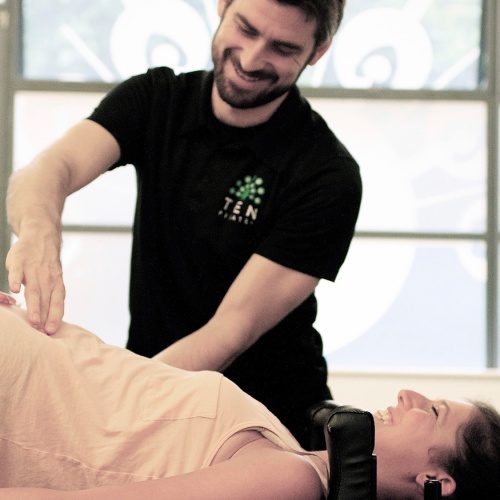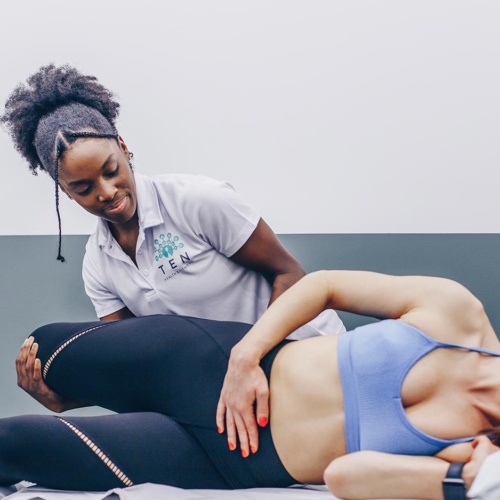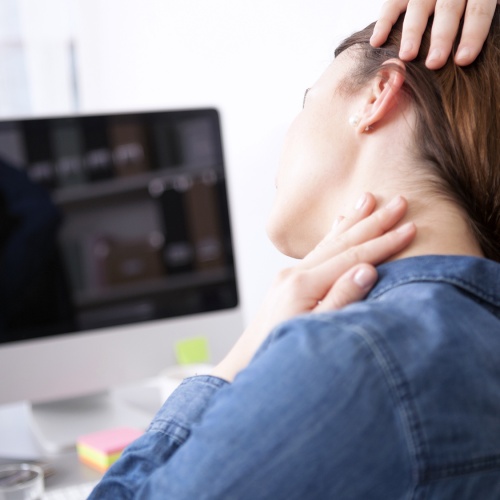Back pain is one of the most discussed, blogged about and researched health issues of the current times. But, despite all that discussion, blogging and research, it’s still one of the most prevalent.
So why is it still happening? And, why – right now – is it more of an issue than ever?
Having spent millennia evolving to stand on two feet most of the day, we have completely shifted to sitting over the last century or so. (That’s yesterday, in evolutionary terms.)
It’s this that has caused so many issues. And it’s the arrival of coronavirus that’s magnified them.
Pre-Covid, even the most sedentary gym-dodgers had some activity in their lives. During and even post lockdown that has changed. A huge percentage of the population has been working from home since March. Their desks are couches, windowsills, ironing boards or even bedside tables.
Quite apart from the impact of spending hours on end in these posturally compromised positions, their incidental exercise has disappeared. No commute. No walking out to grab a sandwich or a coffee. Not even any getting up to go to a meeting or talk to colleagues.
At the same time, there are others who have used the last few months to significantly ramp up their exercise or exercise in new ways.
And it’s the people at the ends of this spectrum – at one end, the most sedentary and at the other the newly/differently active – who are, unsurprisingly, most likely to present with back-related injury and pain
As health/fitness professionals our understanding of our clients’ exercise habits and working postures over the last 6 months must determine our client management and exercise prescription. The goal should be to restore what we would deem as a more normal balance of mobility and strength for each person.
If we consider the basics, decreased spinal mobility is going to be one of the most common faults.
Rotation exercises are then going to be the best thing, as gains in rotational movement will help both flexion and extension ranges, give good neural input to the discs and mobilise the QL muscle. Thread the Needle is a classic, on all fours for a beginner and in a deep lunge for the more mobile. For either of those, focus on the pelvis being stationary and the movement occurring through the spine. Combine with a slight flexion and extension to fully complete this exercise.
Tight hip flexors are also going to be a common problem. Opening up the iliopsoas can alleviate both lower back, groin and hip pain. When doing the standard hip flexor stretch, ensure the pelvis is tucked under and the core is trying to resist the movement, this makes it an active release. For a progression and to gain a length/strength balance of the core and glutes, try lifting the front foot off and not letting the trunk move.
Running has also become extremely popular since lockdown. After hours of inactivity – whether while sitting or sleeping – people commonly fail to activate the kinetic chain in a more functional position. Leg swings should be a fundamental part of any runner’s warm up. Ensure good stability of the stance leg and an even contraction of both core and glute with the swinging leg in each direction. The whole trunk should remain stable. If they have time or history of any hip pathology, frontal plane swings across the body, looking at hip internal and external rotation, are also great for injury prevention.
But don’t think of these exercises as the answer to managing our clients’ back pain.
Think of them as examples of an underlying approach. And when you restart with each client, clinical reasoning, client education and exercise form will have never been more important. This is the perfect opportunity for us to ensure that from the first session (a) our clients are on the right path and (b) we start to undo some of the steps they’ve taken on the wrong one.
This article reproduced by kind permission of Fitpro magazine





